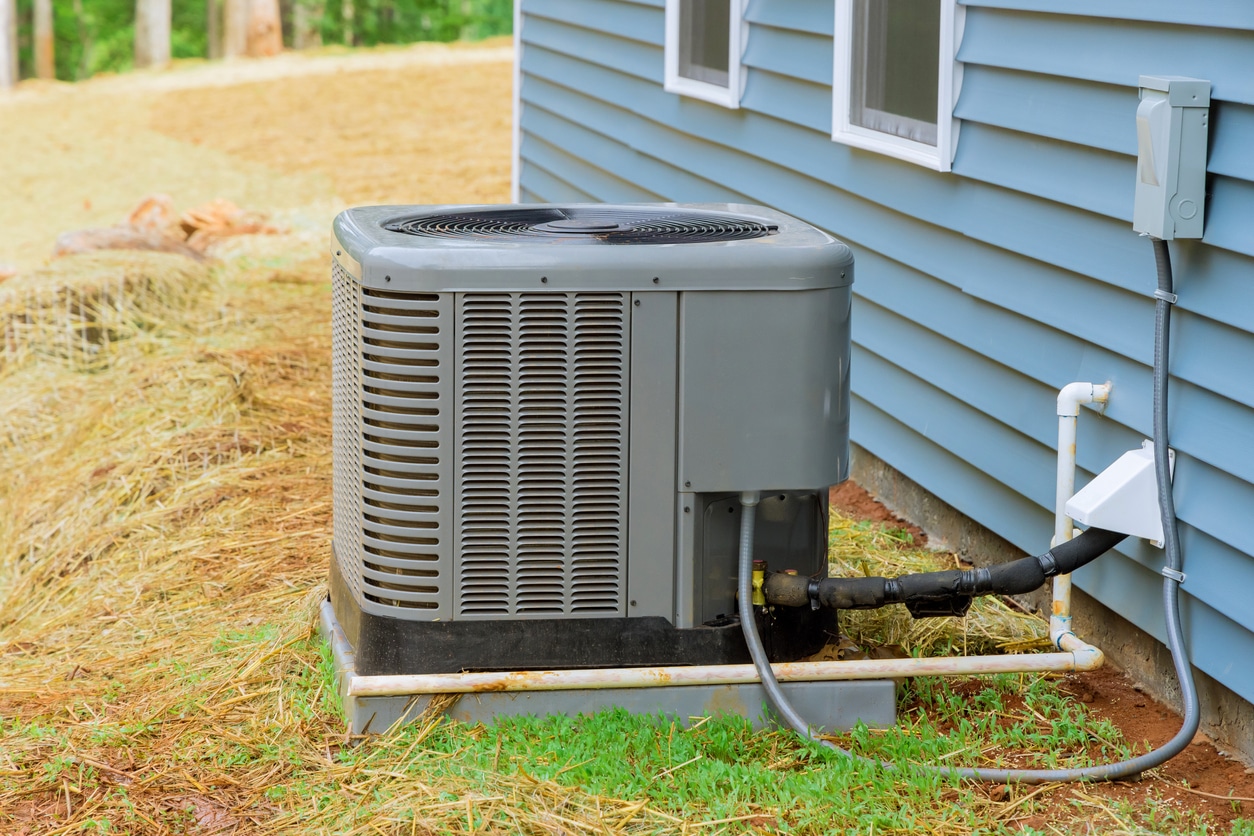HVAC installation is full of potential hazards and risks. If done improperly, it can create dangers for the home and its occupants, including the risk of CO exposure or a fire. Working with a professional HVAC installer is the best way to ensure a safe HVAC installation that protects the comfort and safety of the home.
Safety should be a top priority when considering a new HVAC installation. From the risk of CO exposure to the risk of electrical problems due to poor installation, many potential problems can come from improper HVAC installation. At Hoffmann Brothers, we have a team of experienced HVAC professionals who can assist with your installation to protect your health and safety.
Table of Contents
- Importance of HVAC Systems
- Understanding HVAC Safety
- Benefits of Professional HVAC Installation
- Step-by-Step HVAC Installation Guide
- Common Mistakes to Avoid
- FAQs
Understanding HVAC Safety
An HVAC system that works properly is more than just a comfort. It’s an integral part of your home’s safety. Your heating and cooling system helps maintain a comfortable and safe indoor environment. In the summer, it protects against heat waves; in the winter, it keeps you warm and prevents pipes from freezing.
Importance of HVAC Systems

Faulty or poorly installed HVAC systems pose some safety hazards. If you’re installing a new system, here are some HVAC safety hazards to watch out for:
- Electrical safety hazards
- Exposure to chemicals like refrigerant[1]
- Respiratory hazards
- CO exposure from improper heating system installation
- Injuries from the equipment itself, including cuts
For the installer, the personal risks range from strains to internal organ injuries and damage to the respiratory system. These risks also extend to your family. Poor installation can put your home and family at risk of fire, electrocution, and CO poisoning.[2]
Benefits of Professional HVAC Installation
One of the best ways to avoid these risks is to schedule a professional HVAC installation. These professionals are trained on how to install an HVAC system safely and have the proper HVAC safety training to protect themselves and their homes. While there is an HVAC installation cost to consider, most homeowners decide that the added safety makes it a worthwhile investment.
The Importance of Proper Installation for Safety and Reliability
Many of the HVAC risks mentioned above come from poor installation. Missing an electrical connection creates a fire or electrocution risk. Improper installation can cause the system to draw too much power, putting you at risk of a tripped breaker. Not connecting the system to the gas lines and ventilation system correctly puts you at risk for natural gas or CO leaks.
Not only does proper HVAC installation from a qualified professional protect your safety, but it also protects your system’s reliability. A safely installed system will deliver reliable heating and cooling for many years, while one that has improper installation may struggle to provide reliable service and require frequent repairs.
Here are some added benefits of HVAC installation using proper safety measures by a qualified HVAC technician:
- The HVAC technician will have the appropriate safety gear to prevent accidents.
- The tech will attend regular HVAC safety training to keep up their certification.
- A trained HVAC tech will comply with all safety rules and regulations.
- Professional installation increases the efficiency and effectiveness of the unit.
- Techs receive training on handling the hazardous chemicals associated with HVAC installation.
Step-by-Step HVAC Installation Guide
So, what steps are necessary for a safe HVAC installation? Here’s what needs to happen:
-
- Correctly Size the New System: You must calculate heating and cooling loads to choose an appropriately sized HVAC system for your home.
- Check the Ducts: Ducts must be in good condition for your HVAC to install and work properly, so check their condition and repair them as needed.
- Prepare for System Installation: Choose the location for your air conditioning and heating systems. Make sure they can connect easily to the ductwork.
- Turn off gas and electricity before you begin the installation. Make sure there’s a dedicated circuit for the heating system.
- Install the System: The next step is to install the system. This process is more complex than you might think. Make sure you:
– Attach the system to the return and supply ducts.
– Connect your gas lines to the heater and seal them.
– Connect all electrical wires.
– Connect to the main power supply.
– Connect to the thermostat.
– Solder the gas lines if necessary.
– Install the evaporator coil for the AC above the heater.
– Seal all joints for the AC evaporator coil box.
– Connect the wiring for the AC.
– If the AC isn’t pre-charged, you will need to charge it.
– Open the gas valves on the outdoor unit to allow the refrigerant to move through the system.
- Turn the power and gas back on.
- Turn everything on and check for proper function.
- Check for Safety Issues: Check for gas leaks and have a CO alarm functioning. If the CO alarm goes off or you smell natural gas, leave the home immediately and call 911. The risk of death from CO poisoning or natural gas explosions is too high to risk.[3] Then, call us to figure out what went wrong. In addition, check for any cooling or heating safety issues related to electrical systems.
As you can see, HVAC installation is a complex process. Instead of tackling it yourself, it is recommended to hire a team, like ours at Hoffmann Brothers, to do the work for you, ensuring your unit’s safe and effective functioning.
Common Mistakes to Avoid
Avoid these common mistakes that may put your HVAC system at risk for issues:
Choosing the Wrong HVAC Size
If your HVAC system is larger than it needs to be, you’ll have wasted energy. Bigger doesn’t mean better performance if it delivers more than your home needs. Similarly, if the unit is too small, it will struggle to meet your home’s energy demands. For ideal energy efficiency, the system must be sized correctly based on the size and energy demand of the home.
Inexperienced HVAC Installer
The number of errors that can occur with an inexperienced HVAC installer is extensive. Ensure you’re working with someone who knows what they are doing and has the proper HVAC installation training. With Hoffmann Brothers, you don’t have to worry.
No Breathing Room
The outdoor HVAC unit needs two feet of clearance all the way around. Not leaving enough breathing room can prevent the system from running efficiently. It may also lead to early failure of the system.
Wrong Vent Placement or Installation
You must have a system that vents properly. Without it, you’re at risk for CO exposure. Wrong vent placement or improperly connecting the system to the vent puts you at risk.
Get Professional HVAC Installation with Hoffmann Brothers

Too many safety risks are in play when you don’t have a professional HVAC installer handling your installation. You’ll want to work with a certified professional to minimize these risks and ensure your family and home are comfortable and safe.
Hoffmann Brothers has a solid reputation for customer service and professionalism, with technicians who are expertly trained to help. Contact us today to discuss professional HVAC installation services and see the difference that having the right team of HVAC installers on the job can make.
HVAC Installation Safety FAQs
Improper HVAC installation has caused attic fires, CO poisoning, gas leaks, and electrocution hazards. Poor installation can cause lasting damage to yourself, your family, and your property.
If you notice leaking water, blown fuses, or electrical issues, it may be due to a poorly installed system. Airflow problems, uncomfortable temperatures, and increased humidity are also signs.
If your HVAC system isn’t installed correctly, your home may have improper humidity levels and increased dust and debris circulating through the home rather than getting trapped by the furnace filter. These side effects combined can seriously affect your home’s air quality.
Regular maintenance of your HVAC system can reduce hazards in several ways. An experienced technician can inspect the electrical connections to ensure they run properly and help reduce the risk of health hazards by testing for leaks and cleaning the system to remove irritants.
When an HVAC technician is coming to your home, keep pets and children out of working areas for safety. Ensure a clear path to both the indoor and outdoor unit, and provide access to central power and gas lines as needed by the technician.



